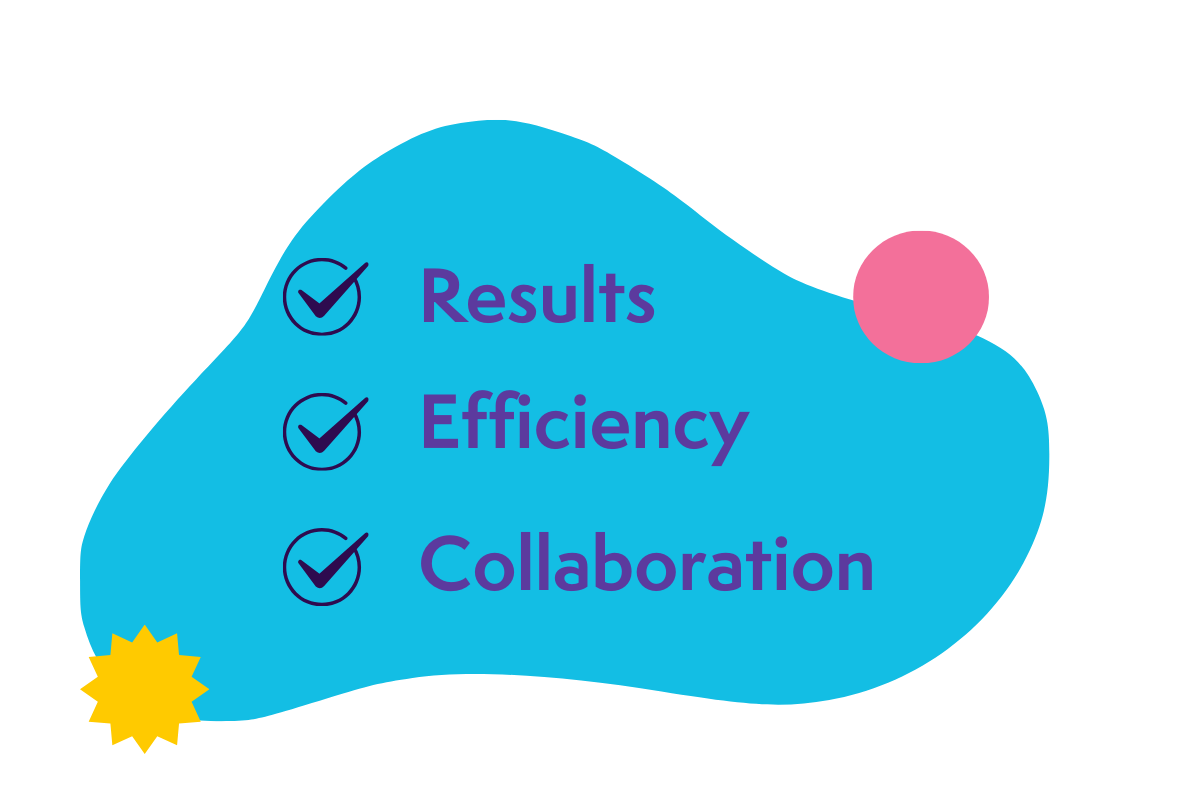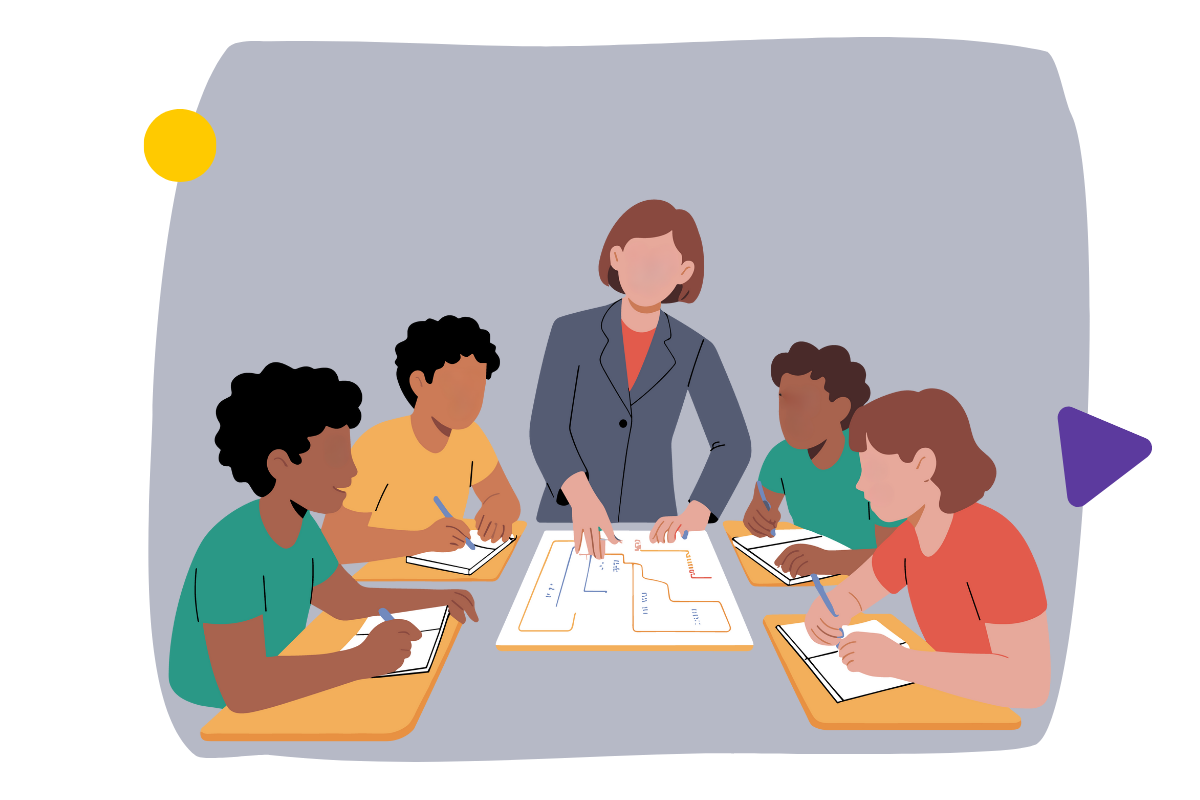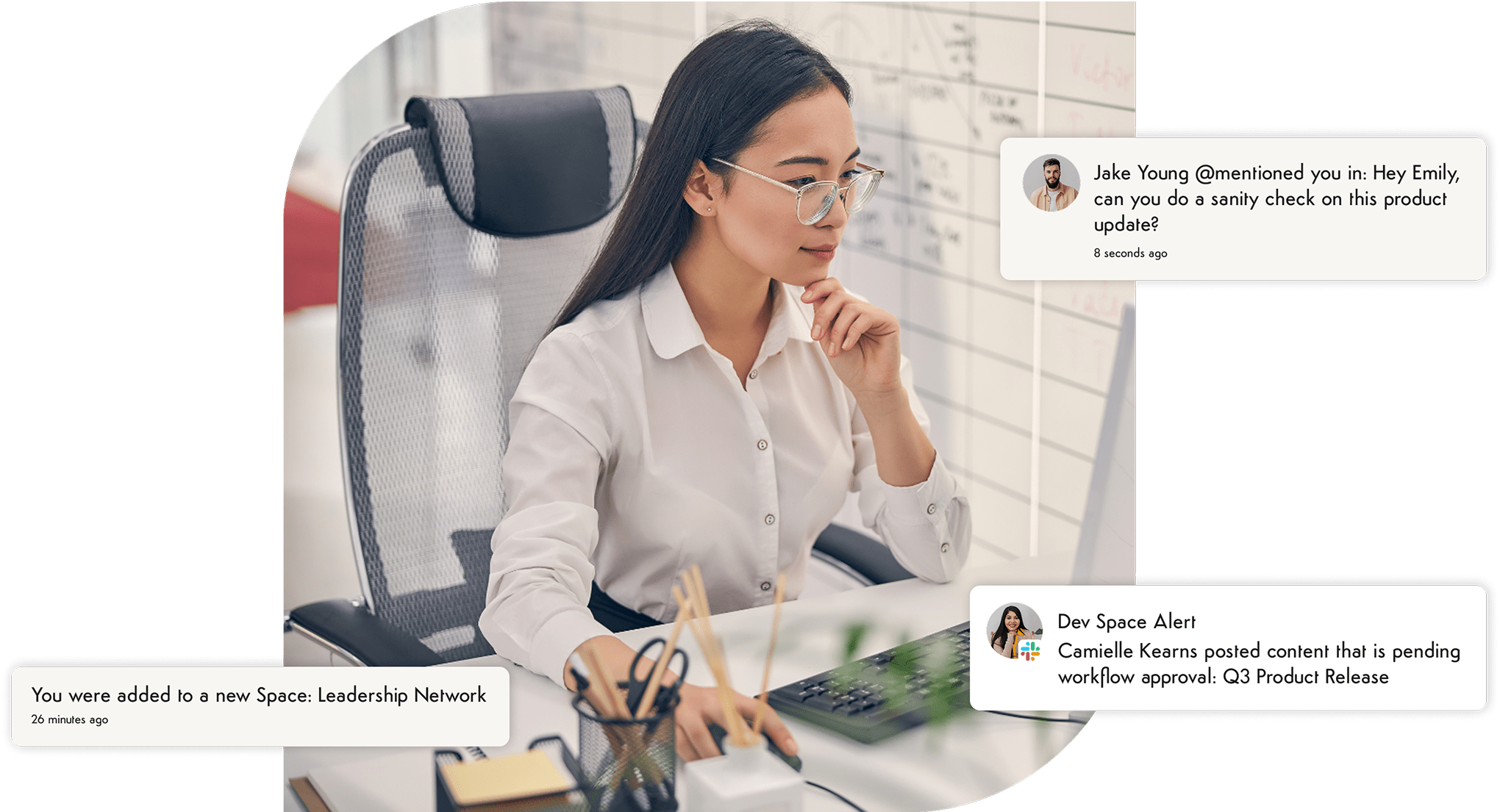Being part of a team is required for many, many jobs. Even if you are a manager, you will still be part of the team you govern. You may also be part of a team with other senior leaders in the company, or you may be assigned to a smaller team for a side project.
Whether you have been an employee of a company for 25 minutes or 25 years, you need to know how to connect and work effectively with anyone, no matter if you have collaborated with that team member before or not. According to TeamDynamics’ 2024 State of the Team Report, 9 out of 10 people have working preferences that don’t line up with core team behaviors, ultimately resulting in a disconnect.
Successful teamwork is not as easy as it might first appear. Let’s take a look at what is needed to make a good team and what we can collectively do to help a group come together to work effectively, even if they have never done so before.
What makes a good team?
A team’s success can depend on several factors. After all, it depends on what the organization itself wants to see from them as they work. These factors could include:
- Results – A good team needs to be able to deliver results. No matter what task is put in front of them, they must be able to complete it to a satisfactory level.
- Efficiency – A good team can’t just deliver positive results; they also need to do it in good time. Even if a team delivers the perfect project in terms of the final goal, if they take 5x the allocated time, they may not have worked efficiently or successfully.
- Collaboration – A good team needs to get on with each other. In successful groups, team members understand how to work well with one another.
Team performance is tied to so much more than total sales, marketing conversions, products delivered, or any other metric you may wish to track.
What traits can be seen in a successful team?
So, what sort of dynamics and skills do we typically see in individual team members that serve the whole? Teamwork skills can take many forms, and everyone can bring something new to the table. Typically, we want to be able to see the following skills in groups that can demonstrate overall team effectiveness:
Active listening
Many people think they are good listeners, but, truthfully, they may still need to work on their active listening skills. This is a communication technique that requires a listener to pay full attention to a speaker, allowing them to both interpret their words and the message and emotions they wish to convey. Active listeners should be able to paraphrase and ask clarifying questions, and the speaker should be left feeling like they were not interrupted or spoken over once the conversation has concluded.
Active listening is useful in team behavior as it improves problem-solving and collaboration while building stronger interpersonal relationships between team members.
Good communication
Communication takes a hundred different forms. It could be sending emails, it could be sitting down for team meetings with a clear agenda, or it could just be leaving notes on a task in the company’s intranet. Everyone should understand the do’s and don’ts of communication and follow agreed guidelines to ensure communication remains smooth, no matter how team goals shift and change.
Good communication is important for the entire team. It helps everyone stay on track in delivering goals while ensuring information is not lost, and positive relationships can be maintained.
Productivity
Team projects can be long and can carry many subtasks. Workers must both know how to work effectively themselves and how to encourage team members to also be productive alongside them If a team project is to progress at a good speed, its participants need to display productivity across its different needs.
When all team members work productively, goals are reached more easily. Tasks can feel less like a strain, and employees will feel good about the work that they are producing.
Efficiency
Productivity often isn’t enough; we also need efficiency to achieve the best possible results. Efficiency sees us completing our tasks with minimal waste of resources, such as effort, budget, and time.
A company will want its teams to be efficient, and so we must expect workers to show this trait in their everyday task delivery. Note that this is not the same as being productive. You can be productive but not efficient, and vice versa. The best workers manage to hit the sweet spot between both.
Trust and accountability
Team members need to be able to rely on one another. Though everyone likes to share their individual successes, there needed to be a level of compatability that drives everyone towards success.
We need to be able to trust the people we work with closely everyday. With that also comes a degree of accountability. We need to own designated tasks, be clear and understanding when we make mistakes, and trust that those around us will deliver constructive feedback when we need it. If we can’t have trust between colleagues, do we really have a team?
Diversity
Leveraging diverse backgrounds can be one of the most important things a team can do. Every experience we have has shaped us in some way and bringing together these variations in perspective and skill can create strong teams.
It might seem like too many perspectives would only cause friction as no one can agree. However, when everyone thinks along similar lines, a phenomenon called groupthink can occur. Championing and platforming diverse voices challenges the perceived normal of a team and helps them push forward towards greater success.
Adaptability
Even the most meticulously laid plans can fall apart at the last moment. A good team needs to be flexible and adaptable so they can pivot to a new track and still deliver results, no matter how disastrously a turn things may take.
A team needs to be agile for greatest success. Unfortunately, we can’t predict everything. An adaptable team pulls together and gets through every challenge thrown their way without fighting or the creation of future issues.
Clear roles and responsibilities
So, how do we reach a state of trust and adaptability? One of the primary factors at play will be the clear definition of roles and responsibilities within the team. People need to know what they are doing, and they need to know what is expected of them at every turn.
Structured teamwork is built on clear expectations. Though it is helpful to jump in and help out during times of pressure, an employee needs to know how they can best contribute in their own ways.
Effective group processes
So, we have a group of people working together with strong communication skills, defined roles and expectations, and enough trust and adaptability to step forward and help when they need to. What they need for true success is effective group processes that clearly lay out how they act while undertaking certain tasks.
Everything from knowledge sharing to hand-offs should be documented and agreed upon. These collaborative skills help to establish team norms, making it easier for teams to make effective decisions and deliver true results.
Job satisfaction
Ultimately, a team that can deliver should be a team that is happy. When people enjoy their work, they contribute more. Engagement goes up, and so does performance. High job satisfaction and employee engagement often go hand-in-hand.
Management must focus on ensuring that employees have everything they need to deliver their tasks comfortably. They need to build a company culture that employees actually want to engage in, and then they will hopefully see high levels of job satisfaction in return.
Why do we need good teamwork?
Though it might seem like a given in the average office, we do actually need to encourage team members to come together efficiently. Do you want a workplace with a strong sense of belonging, a tangible company culture, and a team that genuinely wants to engage with and trust one another at every turn?
The answer is teamwork. Give your team everything they need to connect and thrive and they will inevitably do so. When your group members put forward true collaborative effort to reach organizational success, it can result in some great things for your company.
10 best teamwork tips to collaborate effectively
Good team dynamics don’t emerge in a vacuum. It does require work on behalf of everyone, from the team leader down to the most junior of staff. Everyone needs to engage in the following behaviors for the most effective team collaboration.
1. Build psychological safety
Psychological safety occurs when everyone feels comfortable in their environment. If they make a mistake, they know that they can speak up and bring attention to it, for the response will be to mitigate and fix any damage rather than punish them for causing the mistake in the first place. Everyone should feel comfortable voicing opinions, even if it is in opposition to the majority, and no one should feel out of place within the team.
2. Value everyone’s voice
A big part of psychological safety is creating space for everyone to speak up and offer opinions, thus giving value to everyone’s voice. A high-performing team will often give space for even its most junior members to speak up and offer an opinion. The most senior person on the team won’t always have the best idea, and just because they have to sign off on a decision does not mean they should be the one to make it.
3. Clarify everyone’s role
Effective teamwork needs clear delegation. Everyone on a team will have their role to play, and they should understand what is needed of them in doing so. For example, in a product launch team, the designer knows they’re responsible for the landing page visuals, the copywriter for the messaging, and the project manager for keeping everything on schedule.
Effective teamwork can sometimes mean jumping in to help on a task that isn’t yours; what isn’t helpful is when you act like the proverbial bull in the china shop and take over a task without asking your colleague who needs assistance. When a leader takes the time to clarify everyone’s role and delegate properly, everyone is on the same page. There should be no stepping on toes or rushing to prove yourself; you can just focus on getting your share of the project done and dusted.
4. Set clear goals
Teams work best when they are all moving to the same endpoint. Though management will have the best overarching view of a project and its goals, this is often not communicated down to the people who will actually bring it to fruition. Just as you take time to clarify everyone’s role, make sure you take the time to set clear goals and a path towards them.
5. Simplify communication
Setting up the right communication channels is so crucial in good collaboration, especially when dealing with remote teams who won’t just be able to lean over to the next desk in the office to ask a question. Using a single unified platform like a company intranet can be key here. It will provide a centralized communication channel, such as a team chat, logs and comments next to important documents, and can even integrate with other messaging tools like your email system.
The more you can simplify communication, the easier it will be for your team to communicate and collaborate. More channels mean more chances for information to get lost.
6. Get recruitment right
More often than not, the right team is made in recruitment. If you feel like your current groups aren’t working, take a look at your talent pool and identify what is missing. Diverse teams frequently perform better than their homogenous counterparts.
Don’t just recruit for expertise; recruit for team fit too. By balancing both, you should be able to build a team that works well together on both a professional and personal level.
7. Build relationships
Team building is a thing for a reason! Yes, many people dread the idea of the Corporate Away Day. The idea of crawling through mud with Kevin from Legal, both of you clutching paintball guns, is not everyone’s idea of a good time; we get it. But that doesn’t mean that you shouldn’t put the work in to build interpersonal relationships within your teams.
You also don’t need to be bestest of friends with your team. However, you do need to know them well enough to get on and complete your tasks. Taking time for a team lunch or a social after work helps to build connections that you can then leverage for more productive and collaborative work in the office.
8. Set up employee recognition
Everyone wants to know when they have completed a job well done. Employee recognition does not have to be just a pizza party every quarter; there are thousands of ways that you can make it actually meaningful.
When employees feel valued, they will want to continually engage with their work. While verbal feedback is always the first step towards this, go the extra mile and show them with an action that you do value what they do for the company
9. Build culture alongside productivity
In an ideal world, employees will enjoy their workplace alongside the actual tasks they complete. Building a solid company culture is key to retention. Make use of your company intranet to create a welcoming hub where everyone can catch up on the latest news and updates. Small details like this help to create an environment where people want to engage with more than just their task list.
10. Identify and address problems
No matter how much work is put into creating a positive working environment, problems are still going to arise. Good teams must put in the work to address and fix these problems to ensure that they cannot cause further damage or repeat in the future.
It can be difficult to have conversations about why things went wrong. Good leaders and their teams need to focus not on who is responsible for the issue, but what everyone can do to fix it. Bringing everyone together to focus on improvement can really help to bond a team more than any team-building exercise can.
Build the right team dynamic with Axero
An effective team will be the true heart of your company. You can throw out and define team goals as much as you want to, but the structure needs to be in place to support these plans. Everyone deserves respect and a chance to speak. No matter how junior they are, they may have just the solution that the problem needs. With an inclusive work culture that respects diverse perspectives, you will set up your teams for success so they can tackle anything put in their paths.
Don’t fall into the trap of thinking that more tools are just the thing your team needs. The more innovative solutions and platforms you try to give them, the more avenues you open up for confusion and lost information.
What your teams need is one platform where they can do everything from knowledge sharing to communication to fun team culture. Axero is that solution.
Our company intranet can be built from the ground up to meet your exact needs. Create the platform that works best for you and your needs. Give your teams a single centralized hub they can branch out from and return to with every task completed.
Take the best teamwork tip we can give you: book a demo with Axero today.




















 info@axerosolutions.com
info@axerosolutions.com 1-855-AXERO-55
1-855-AXERO-55


